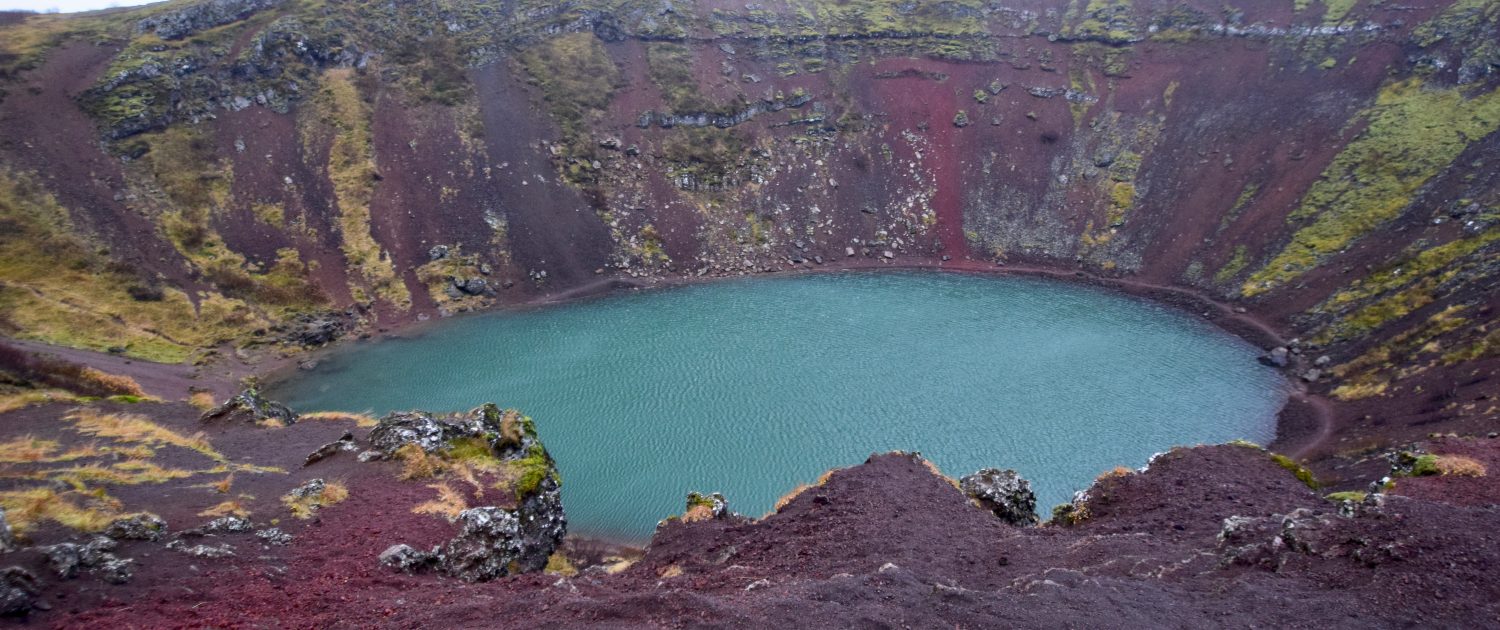The main types and features of volcanoes
A volcano is a landform, usually the size of a mountain, that is typically conical and has a cater and vent through which lava, hot gases, steam and rock fragments are or have been erupted through the crust of the Earth.
Volcanoes are formed in three types of locations:
- At constructive (divergent) plate margins, when two tectonic plates move apart. Where the plates separate, a line of weakness is formed where magma can rise to the surface as lava. The lava solidifies to form volcanoes and ridge mountains.
- At destructive (convergent) plate margins where an oceanic crust sink below (subducts) a continental crust. The oceanic plate undergoes friction and intense heating as it subducts the continental plate causing the crust to turn into molten magma. As the magma accumulates, it puts intense pressure on the crust above. Over time the magma rises through weaknesses in the crust above. When magma reaches the surface as lava volcanoes form.
- At hot spots on the surface of the Earth. Hot spots are thinner, weaker areas of the Earth’s crust where magma forces its way onto the surface forming a series of volcanoes. The Hawaiian Islands are an example of where this is occurring.
Magma reaches the surface as lava, volcanic bombs and as ash. Lava is hot molten, or semi-fluid rock erupted from a volcano or fissure. A volcanic bomb is a fragment of molten rock between 60 mm and 5 m in diameter which is ejected into the air during a volcanic eruption. Volcanic bombs are found up to 5 to 600 metres away from the vent. Ash is remnants of pulverised solid lava that measures less than 2 mm in diameter. Ash can be transported thousands of miles away by the wind.
Volcanic eruptions can also lead to:
- lahars, which are volcanic mudflows caused by water (e.g. rain and meltwater from ice) mixing with ash running off the volcano.
- pyroclastic flows, superheated clouds of gas mixed with ash that flow down the sides of volcanoes at speeds of up to 200 km per hour.
- earthquakes that occur due to the upward movement of magma under significant pressure can cause violent shaking.
What are the main types of volcano?
There are three main types of volcano based on their shape and how they are formed. These are composite (strato), shield and dome volcanoes.
Composite or strato-volcanoes are steep-sided, and consist of layers of ash and lava as both are ejected during eruptions. Composite volcanoes form on destructive plate margins where an ocean crust subducts a continental crust and melts. Magma rises through faults in the crust and often result in violet eruptions due to its high viscosity.
Volcanoes exist in three states, active, dormant and extinct. An active volcano is one that has recently erupted and is likely to erupt again in the future. There are approximately 1700 active volcanoes in the world. Dormant volcanoes have not erupted in the last 2000 years but have the potential to erupt again in the future. As they may not have erupted for a long period time they are difficult to predict and therefore very dangerous. An extinct volcano has not had an eruption for at least 10,000 years and is not expected to erupt again in a comparable time scale of the future.
Check your understanding
Features of volcanoes
Volcanic States
Related Topics
Use the images below to explore related GeoTopics.



